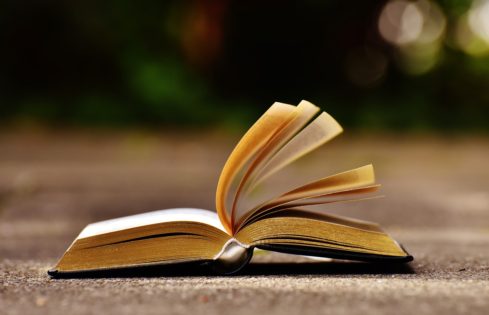
Chapters are the stepping stones that guide a reader from the beginning to the end of your story. A chapter can be a mini-story in itself, with its own arc and exciting stuff happening in a little, literary package. When it comes time for the chapter to end, what do you do? What is a chapter ending supposed to accomplish within the bigger context of a story? Let’s explore some possibilities.
Wrap Up
A chapter ending can wrap up that mini literary package–what has been happening in the chapter itself. Let’s say your character’s car has broken down on a deserted highway, and they have been hiking for hours to find help. Perhaps they see lights in the distance that focus their attention and efforts on getting there. What they’ve experienced in the chapter is ending, but there’s more that’s going to happen.
Keep Them Turning the Page
Sure, you’re ending a chapter, but you want your reader to turn the page and keep reading. Ending the chapter on a cliff hanger or unanswered question will give your reader no choice but to turn the page and continue. Our hiker has reached the building they saw from a distance. Is the door open or locked? Is there someone there who can help, or are they walking into danger? Ending a chapter with unanswered questions/situations for your character will keep the reader moving forward to that next chapter. She opened the door and stepped inside.
Give It a Rest
Another way to end a chapter is to give your character a much-needed rest. Your character and the reader will have a chance to let any pent-up tension flow out of them and take a bit of a break. Don’t worry, you can still keep them turning the page! Here’s another scenario: Our hiker has reached the building, found it occupied, and a person inside who smiles and offers refreshment and help. Your reader will want to learn more about the kind stranger, why he/she is willing to help, and what kind of help that will entail. There’s also the possibility that this helpful stranger can turn from good to evil, but that can happen in the next chapter or further on in the story.
A Small Reminder
One last idea. If you have an object that plays a significant role in your story (i.e. a ring, letter, location, etc.), sometimes it’s good to end a chapter with your character thinking about it or doing something with/about it. It will remind your reader that it hasn’t been forgotten, it’s an important part of the story, and the next chapter might reveal more about it.
In a way, chapter endings aren’t really endings. They’re pauses that the character and reader take together before jumping into that next chapter. Make them memorable, and make them count!

Lee Gramling
When I first started writing novels (Lo, these many years ago!) My chapters ran about 2800 words (12 MS pages), which felt about right although I sometimes included a “drop” in the middle to further separate the narrative. I’ve more recently discovered the current style is to make them about half of that — presumably due to reduced attention spans on the part of readers. Either will work of course, but I don’t recommend anything longer. Ending each chapter in one of the ways you suggest not only makes the reader want to turn the page. For a “pantzer” like me, it also serves to get me started the next time I sit down at the keyboard!
Niki Kantzios
Thanks for reminding us about this important moment in a novel. How many times I’ve read a book that I couldn’t put down because each chapter left me in such a placeof tension! (Just five more minutes, Mommy?)